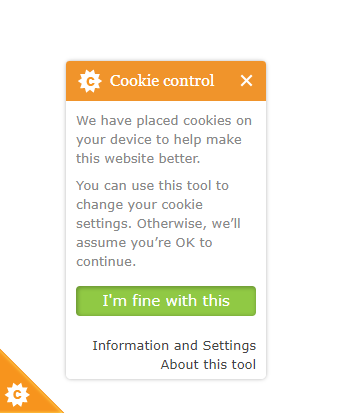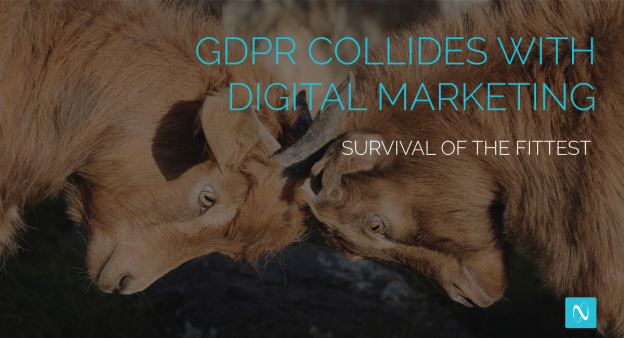Unlike the apocalyptic outcomes of other “ominous” dates in tech history, May 25, 2018 marked the flipping of a switch to protect privacy and prioritize control for citizens of the European Union. No, the internet did not break, but many sites are still grappling with the notoriously vague language of GDPR.
Similar to the fury of the Y2K hype, pre-GDPR discussion spiraled on blogs, in tweets, articles, whitepapers and emails galore (ironically). With the dust beginning to settle, the immediate future becomes a bit clearer.
GDPR is Here — Now What?
Instead of simply fizzling into pop culture infamy when the clock struck 12:01, a discussion around this topic has continued. The conversation around phrases like “opt-in via legitimate interest”, “soft opt-in” and “consent-based opt-in” has become a hazardous trifecta that many marketers are either ignoring (at their peril) or painstakingly abiding (sometimes, to a fault.)
Naturally, GDPR has brought increased scrutiny for tech companies and advertisers. On June 28, 2018, California passed the California Consumer Privacy Act of 2018. This legislation closely echoes the data privacy stipulations of GDPR and goes into effect in January 2020. CCPA could mark the beginning of a revolution in consumer rights for the US. It’s a new age of awareness for consumers, users, and companies who want to retain good-will with their audiences.
B2B Marketing’s Response to GDPR’s Approval
Since GDPR went into effect, we’ve seen an array of responses to the regulations: from dismissiveness to exhaustive measures that effectively eliminate a brand’s entire EU audience.
By proactively unsubscribing all of their EU users by asking them to “re-opt-in”, some marketers are reevaluating their global online footprint. Playing into the economic downside predicted by GDPR critics, these marketers are erring so far on the side of caution, they’re willing to withstand some loss for fear of the astronomical fines promised by GDPR for non-compliance. These fines can be even more devastating for smaller companies, so “better safe than sorry” makes sense.

This is a proper cookie consent, as seen on the ico.org website.
Then there are others — half-heartedly posting cookie disclosures that don’t solicit for acceptance or have continued to bury opt-out links and tout verbose privacy policies.
Whether you’re B2B or B2C, it’s clear that GDPR is forcing some areas of the marketing industry to scrutinize their practices and in some cases, their entire business model. With the passing of AB 375 in California, more states in the US are likely to adopt the consumer-friendly GDPR-ish protections, so companies will have to revisit their data privacy infrastructure again in two years.
Why Regulation Could Improve Your ROI
The regulation of consumer information shouldn’t be scary for businesses. In fact, as long as you’re using the right tools, these new laws could actually improve the quality and ROI of your marketing toolkit.
Marketers who already capitalize on and obsess about great user experience will stand to benefit the most from GDPR and CCPA.
For many organizations, the trouble with GDPR compliance begins with a fundamental disconnect from their audience. Whether that’s by design or by culture, publishers and marketers looking to monetize where ever possible at the users’ expense are probably still in-fighting over how to approach GDPR.
Put it this way: have you ever been enticed to read a “Get Thin Quick” article, only to face disappointment that the answer is diet and exercise?
GDPR is kind of like that — companies looking for the quick and easy solution, without modifying an annoying UX for their EU users, are still scrambling for how to “hack” compliance. Meanwhile, there are organizations that have developed their healthy meal plans and gradually introduced exercise into their routines. Those guys are taking GDPR head-on and their users appreciate it. That means return traffic and loyalty from users. And isn’t this what we’re after?
What we’re saying is that it takes some work and a perspective that the user experience on their web properties are more important than “hacking” GDPR. Sure, there are some sites that may crumble in the wake of GDPR — but those are the businesses that put an unsavory spin on marketing anyway. GDPR = SPAM-Be-Gone!
For marketers relying on these “solutions”, the tide is shifting towards real options that drive value for your brand and for your users. That also means less risk for marketers who deploy these solutions to their audiences and on behalf of clients. Those companies that consider the user as the core of the model will emerge the winners and acquire customers whose vendors never really cared about that.
Scale Isn’t Always a Predictor of Compliance
The idea of “who is responsible?” has had marketers spooked since the moment GDPR was announced. While some martech platforms have provided vast repositories of resources on their compliance measures, marketers need to do their own due diligence. Just because your vendor is big doesn’t mean they know what they’re doing. Infographics and blogs are helpful (we hope) but actions should be audited. If your vendor’s cookie policy appears in a sticky bar that says, “Ok” to accept, that’s not really enough.
If your forms aren’t providing the appropriate type of consent to the appropriate users dynamically, that’s not acceptable. Dig deeper and ask questions.
Conversely, small companies might not have had the resources to build in compliance measures. Despite greater opportunity for control over their product, it’s still possible that perhaps there were oversights or limitations for engineering or prescriptive legal guidance. In that instance, customer feedback channels should not only be open, but collaborative. Smaller vendors should be able to nimbly pivot their approach to compliance if their customers reasonably believe there’s a risk.
Ask the appropriate questions and get the information you need to protect every person associated with your business with our GDPR checklist.
The Obstacle is the Way
As a martech provider, we don’t want to throw stones. For us, GDPR has simply meant another opportunity to customize NetLine’s form technology. Leveraging the existing technology, our forms dynamically render the appropriate verbiage for an EU user; taking location and email entries into consideration, users are exposed to exactly the right experience. The form technology itself caters to the busy professionals requesting content across our B2B network.
The scale of our network lends itself to serving lots of professionals across the world who want to consume our content, so we’ve made it an easy, quick experience to download whitepapers, eBooks, webinars, infographics and more. Additionally, GDPR comes with a separate set of rules for B2B that are a bit less stringent.
By always keeping users and customers in mind, it was just another development project for our engineers to execute. As companies like Facebook and Google likely take the brunt of the heat from “trial by fire”, we’ll all learn a bit more about what lawmakers meant with the language choices in GDPR.
Legislation like GDPR in the martech industry will continue to be introduced, forcing businesses to adapt to expanding regulations as they unfold over the next decade. It’s a bit like Darwinism for martech: the strong and nimble organizations who are paying attention will survive and those who are in it for quick wins and surface-level value to users will crumble. Marketers who keep the best interests of EU users in mind will be rewarded.
Make sure your business is in that category.
